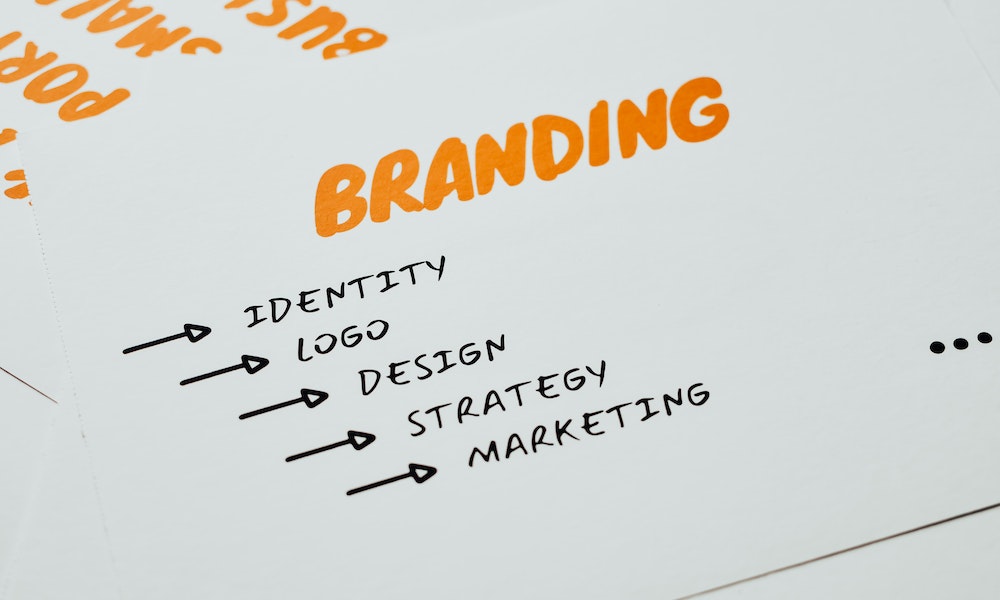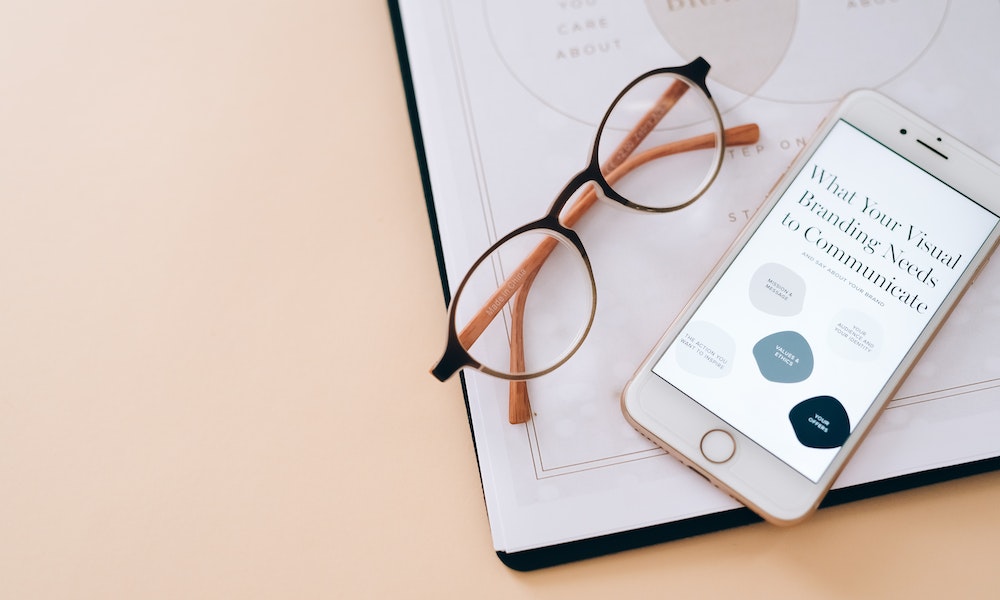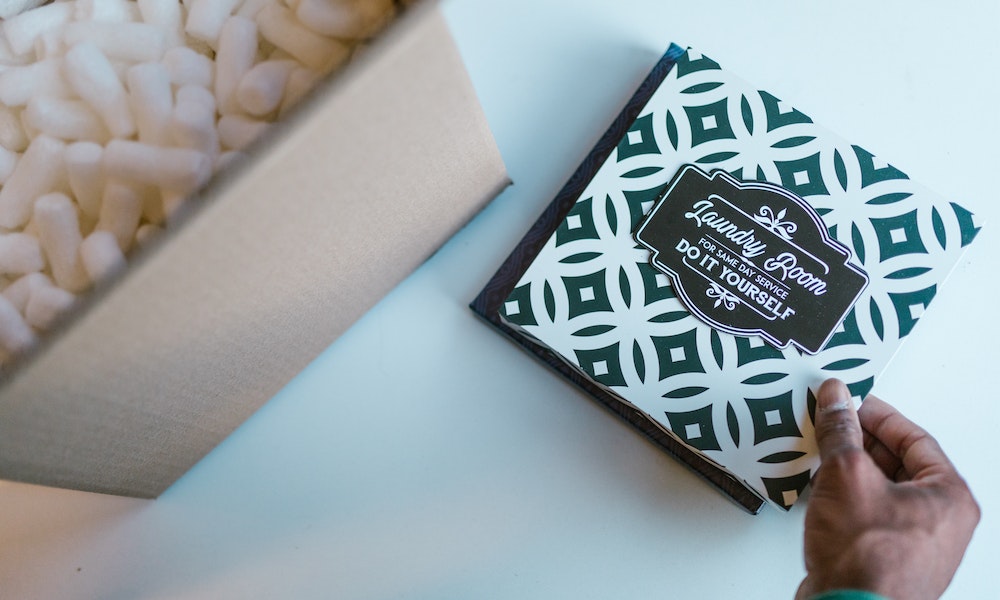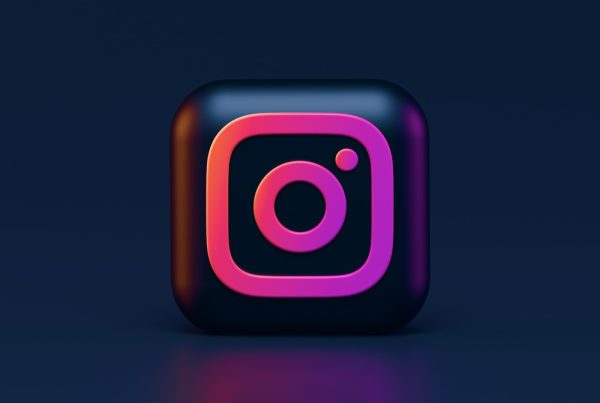
Branding collateral refers to the various materials and assets that a company uses to promote and reinforce its brand identity. From logos and business cards to social media graphics and packaging, branding collateral plays a crucial role in establishing a consistent and memorable brand image.
In this guide, we’ll explore the different types of branding collateral and provide tips on how to use them effectively to build your brand.
Branding and collateral – differences
Branding and collateral are two different but interconnected aspects of marketing. While collateral refers to the specific design elements and materials used to represent a brand, branding refers to the overall image and personality of that brand.
In other words, branding is the strategy behind how a company presents itself, while collateral is the tangible representation of that strategy.
What is branding collateral?
Branding collateral refers to the collection of materials and assets that a company uses to promote and reinforce its brand identity. This can include everything from logos and business cards to social media graphics, packaging, and even employee uniforms.
The goal of branding collateral is to create a consistent and memorable brand image that resonates with customers and helps to differentiate the company from its competitors. Effective branding collateral can help to build brand recognition, establish trust and credibility, and ultimately drive sales and revenue.
By creating a cohesive and consistent brand image across all touchpoints, companies can establish a strong and recognisable presence in the market. This, in turn, can help to build customer loyalty, increase brand awareness, and ultimately drive business growth. Whether you’re a small startup or a large corporation, investing in high-quality branding collateral is a crucial step towards building a strong and successful brand.
Types of branding collateral
There are many different types of branding collateral that companies can use to promote their brand identity.
A branding collateral can vary from company to company depending on their needs and marketing strategy.
However, some common branding collateral items that most businesses use include:
- Logo and brand identity materials
- Business cards and letterheads
- Brochures and flyers
- Social media graphics and templates
- Packaging and label designs
- Email signatures and templates
- Website designs and templates
- Advertising and promotional materials
Each of these materials serves a specific purpose in promoting the brand and reinforcing its identity.
For example, a logo is often the first thing that customers see when they encounter a brand, so it needs to be memorable and instantly recognisable.
Business cards and letterheads help to establish a professional image for the company, while brochures and flyers can be used to provide more detailed information about products and services.
Envelopes are often overlooked, but they can also be an important part of branding collateral. They should be designed to match the company’s letterhead and business cards.
Social media graphics and packaging can help to create a cohesive and consistent brand image across different channels, while employee uniforms can help to reinforce the brand identity and create a sense of unity among team members.
Packaging is also an important part of branding collateral because it can help create a cohesive and consistent brand image across different products.
Finally, employee uniforms can help to reinforce the brand identity and create a sense of unity among team members. They should be designed with the brand’s colours and logo in mind to create a professional and cohesive look.

The importance of consistency in branding collateral
Consistency is key when it comes to branding collateral. All materials should have a cohesive look and feel that reflects the brand’s identity and values. This helps to establish brand recognition and build trust with customers.
Inconsistencies in branding collateral can lead to confusion and dilute the brand’s message. It’s important to establish brand guidelines that outline the proper use of logos, colours, fonts, and other design elements to ensure consistency across all materials.
By maintaining a consistent brand image, companies can create a strong and memorable brand that resonates with customers.
For example, if a company uses different logos or colours on their website and social media profiles, it can make it difficult for customers to recognise and remember the brand.
How to create effective branding collateral?
Creating effective branding collateral requires a deep understanding of your brand’s identity and values.
Start by defining your brand’s mission statement, target audience, and unique selling proposition. This will help you determine the tone, style, and messaging that should be reflected in your branding collateral. From there, work with a designer or design team to create a cohesive visual identity that includes logos, colours, fonts, and other design elements.
It’s also important to consider the tone and messaging of your branding collateral.
Is your brand playful and fun or serious and professional? Make sure your branding collateral reflects this tone.
Finally, regularly review and update your branding collateral to ensure it remains relevant and effective. This may mean updating your logo or refreshing your website’s design. By creating cohesive and consistent branding collateral, you can build a strong brand identity that resonates with your target audience.
Examples of successful branding collateral
Successful branding collateral can take many forms, from business cards and brochures to social media graphics and website design.
Some examples of effective branding collateral include Nike’s iconic “swoosh” logo, Coca-Cola’s classic red and white colour scheme, and Apple’s sleek and minimalist product packaging. Other companies have successfully used branded merchandise, such as t-shirts, hats, and tote bags, to promote their brand and build customer loyalty.
When designing branding collateral for your business, it is important to consider how the pieces will be used. For example, if you are creating a logo, it should be easy to reproduce at different sizes and on different mediums, such as t-shirts or billboards.
If you are designing brochures or flyers, they should be visually appealing and contain easy-to-digest information that paints a clear picture of your products or services. Your website design should also incorporate your branding elements while providing a smooth and engaging user experience.
In other words, all of your branding materials should work together to create an overall cohesive identity for your brand.
Branding collateral checklist
Creating a branding collateral checklist is an essential step in ensuring that all design materials are consistent and effective. A branding collateral checklist should include items such as:
- Does the design accurately represent the brand’s image and values?
- Is the design consistent with other branding collateral?
- Does the design effectively communicate the desired message?
- Are all design elements properly aligned and balanced?

Rebranding collateral
Rebranding collateral refers to the design materials and elements used when a company undergoes a rebranding process. This process can include changes to the company’s name, logo, colour scheme, messaging, and overall image.
Rebranding collateral is essential to ensure that the new brand image is consistent and effective across all communication channels.
Collateral in graphic design
Collateral in graphic design refers to the range of print and digital materials that a company uses to represent its brand, promote its products or services, and communicate with its customers. These materials can include everything from business cards, brochures, and flyers to social media graphics, website designs, and email newsletters.
Collateral design plays a critical role in building a brand identity and ensuring that it is consistent across all communication channels. Graphic designers who specialise in collateral design work closely with companies to develop materials that accurately represent the brand’s image and values while also resonating with the target audience.
One important aspect of collateral design is ensuring that all materials have a consistent look and feel. A brand style guide can be helpful in this regard, as it outlines the guidelines for how the brand should be represented visually.
Another important consideration in collateral design is the target audience. Different materials may be more effective for reaching certain demographics or communicating certain types of information.
For example, a brochure may be more effective for providing detailed product information, while social media graphics may be more effective for engaging with customers in a more informal way.
When designing collateral, graphic designers must also consider the medium in which the materials will be displayed. Print materials may require different design considerations than digital materials, and designers must take into account factors such as resolution, file type, and colour space.
Branding collateral mockup
Branding collateral mockups are an important tool for graphic designers and marketers in the branding process. They are essentially digital or physical representations of the proposed branding collateral, such as business cards, brochures, or website designs, in order to provide a more tangible sense of what the final product will look like.
Mockups can help designers and clients visualise the final product and make necessary adjustments before it is produced, ultimately saving time and resources. They also allow designers to test how the branding collateral will appear across different mediums, such as print or digital.
There are various types of mockups available, including digital mockups and physical mockups.
Digital mockups are typically created using graphic design software and can be used to showcase the branding collateral in digital formats, such as on a website or social media platform. These mockups can be easily edited and updated as needed, and they can also be used to create a range of different versions and variations of the branding collateral.
Physical mockups, on the other hand, are tangible representations of the branding collateral that can be held and examined in the real world. These mockups are typically used for print materials such as brochures, business cards, or packaging designs. They can help designers and clients see how the branding collateral will appear in real life, including the texture and weight of the paper, the colour of the ink, and the overall layout of the design.

Using logos without permission in Australia
Using logos without permission in Australia is illegal and can result in legal action being taken against the infringing party. Companies should always seek permission before using another company’s logo or branding collateral.
In some cases, companies may be able to use logos and other branding collateral under specific circumstances, such as for educational purposes or under fair use laws.
Branding at DesignQ
For companies looking to create effective branding collateral, it is essential to work with a skilled and experienced graphic design agency. DesignQ is one such agency that can help businesses create unique and memorable branding collateral that accurately represents their brand image and values.
If you are looking to create or update your branding collateral, consider reaching out to DesignQ for our expert services. With a team of talented designers and a focus on providing personalised and high-quality design solutions, we can help your business stand out in a crowded market.
Don’t miss out on the opportunity to create effective and memorable branding collateral that accurately represents your brand’s image and values. Contact us today to get started.
Conclusion
Branding collateral is an essential component of any brand’s marketing strategy, and it encompasses all the design materials and elements used to represent and promote a brand.
Effective branding collateral is unique, memorable, and consistent with the brand’s overall image, and it can include items such as logos, business cards, brochures, social media templates, website designs, and more.
Rebranding collateral is also important to ensure that the new brand image is consistent and effective across all communication channels.
Graphic designers play a critical role in creating effective branding collateral, and companies should always seek permission before using another company’s logo or branding collateral to avoid legal issues.
By following a branding collateral checklist and ensuring that all design materials accurately represent the brand’s image and values, companies can create a strong and consistent brand identity that resonates with their target audience.









